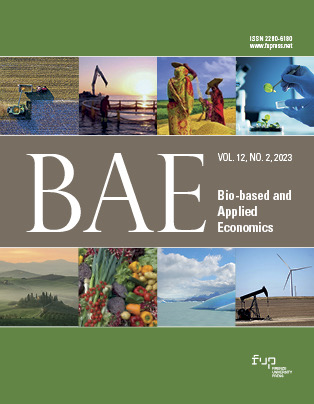Earliness, phenological phases and yield-temperature relationships: evidence from durum wheat in Italy
Published 2023-05-15
Keywords
- climate change,
- crop insurance,
- growing degree days,
- risk management,
- weather index
How to Cite
Copyright (c) 2023 Marco Tappi, Federica Carucci, Anna Gagliardi, Giuseppe Gatta, Marcella Michela Giuliani, Fabio Gaetano Santeramo

This work is licensed under a Creative Commons Attribution 4.0 International License.
Abstract
The impacts of extreme weather events on crop production are largely heterogeneous along the timing dimension of the shocks, and the varieties being affected. We investigate the yield-temperature relationships for three categories of earliness of durum wheat: early-maturing, middle-maturing, and late-maturing. We disentangle the time dimension distinguishing five phenological stages, as identified by the Growing Degree Days approach. Our panel regression models show that the starting, growing, and anthesis stages are sensitive to changes in minimum temperatures, regardless of wheat earliness. Raises in maximum temperatures during the starting stage are associated with increases in yields until a certain threshold above of which decrease; the opposite is true for increases in maximum temperatures in the maturity stage for late-maturing varieties, and in the end stage for early-maturing varieties. Results imply that farmers and policymakers may adopt ex-ante and ex-post risk management strategies, i.e., choice of variety to avoid severe yield losses and incentives to crop insurance uptake, respectively.






